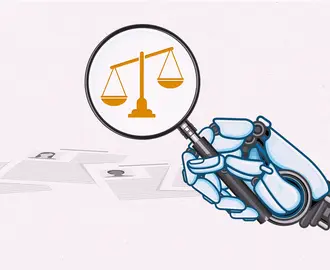Credit: whyframestudio / iStock
A strong data strategy is essential to be competitive. Companies refer to data nearly 80% more often in annual reports than they did in 2017, according to a recent report. And roughly half of companies surveyed had hired a chief data officer in the last two years — someone at the C-Suite level or just below who is responsible for the company’s strategic approach to data.
“Data is increasingly an asset that has both value and risk,” said Maria Villar, head of enterprise data strategy and transformation at German software company SAP. Given the rapidly growing strategic importance of data, it is critical that CDOs not only do their job well but communicate effectively about their work. “Having an effective data strategy and then communicating it to important constituents, like your executive board, is a key to success,” Villar said.
At the recent MIT Chief Data Officer and Information Quality symposium, Villar moderated a panel featuring Ellen Nielsen, CDO at Chevron, and Denise Letcher, executive vice president and CDO at PNC Bank, discussing ways to craft a presentation about data strategy. The panelists stressed preparing early, catering data presentations to reach different audiences, and the importance of connecting to key business goals and telling compelling stories.
While the discussion focused on communication with boards, the key takeaways pertain to any set of important stakeholders.
Be prepared
Start early, said Letcher, who begins work on her annual business updates two months in advance. She begins by reviewing past presentations; Letcher has been PNC’s chief data officer for nearly seven years. “I have themes that I know the board likes to hear about,” she said. “I want to make sure I carry those forward.”
She also works closely with other teams to refine different dimensions of the presentation. Her boss provides “invaluable feedback” on the high-level topics; her managers review the content; the communications team helps her create a strong executive-level presentation.
Beyond the specific content of one’s own presentation, Nielsen pointed out the value of knowing where she fits during the meeting. Who is scheduled to present before and after? What might be the general mood of the meeting based on the topics under discussion?
“Typically, there are certain people who are preparing the content on the agenda, and they know very well what’s going on that day,” Nielsen said. She suggested finding this person and getting as much information as you can — it’s good to know what’s on the mind of the board members as you go in to talk.
CDOs must also stay abreast of salient issues beyond the company’s borders: How does data management fit with potential changes on the horizon? Letcher noted that board members, who tend to be active news consumers, often inquire about how CDOs are using their role to respond to industry shifts. Letcher, for instance, is keenly attuned to the overlap between her role and upcoming climate regulation.
Finally — it almost goes without saying — “practice, practice, practice,” Letcher said. Run through the presentation alone; test it on select groups for feedback. Be sure you have confidence in both your prepared remarks and your ability to answer questions.
Tell stories with broad relevance
It is important to connect the work of data and analytics to larger business objectives, Letcher and Nielsen said. Audiences like a board of directors are typically not interested in the details of specific projects or processes, and they don’t need to know what a CDO has been doing day-to-day or month-to-month. Rather, they care about outcomes — how the application of data and analytics is advancing business objectives.
Related Articles
“You want to step back and say, ‘How is data helping the overall company?’” Letcher said. If one slice of data proved essential to a recent merger and acquisition, for instance, then tell that story and clarify the value that is generated by good data. You want to explain how data is enabling the business strategy, she said.
As the audience for these presentations moves deeper into the organization — from the board, to leadership, to lower managers — the need for detail increases. The outcomes also grow more specific: from top-level business strategy to how data and analytics are supporting a particular unit or function. Budgetary questions and financial details become more relevant.
Competitiveness is another important topic of discussion, Nielsen said. When describing the strategic role of data within your company, benchmark these descriptions against competitors. What are you doing better? In what ways do you need to catch up? When describing areas for improvement, be sure to outline the most effective levers of investment.
Regardless of audience, Nielsen and Letcher highlighted the importance of stories and anecdotes. “I put a lot of effort in [finding] the right stories to share,” Nielsen said. “I look for stories that tell about new things, or where the organization tried something new and really overcame an obstacle and created tremendous value. These are the best.”
Don't forget the finer points
Alongside big picture issues of how to prepare for and organize a presentation, Nielsen and Letcher provided tips on the fundamentals, from how to frame the conversation to how many slides to create.
- Be explicit about why you’re there. If you’re there to provide an update, say that. If you’re there to ask for approval, say that. Nielsen suggested that if you’re there for an “ask,” give the board options rather than asking for a single outcome.
- Assume 10 to 20 minutes for the key messages. This means on the order of 6 – 8 slides. Present an executive summary with the main points first. And, whatever you do, don’t read from the slides. That’s “the kiss of death,” Letcher said.
- Prepare for questions. Think about the questions you may get in advance. Have dates in mind so that you can speak to chronology. Don’t be afraid to ask for more time if you don’t have an answer: “I’ll get back to you,” is a perfectly fair response.
- Don’t use acronyms. If you absolutely need to use one, define it first.
It’s also important to remain confident — even if people come and go or appear distracted. “Recognize that you are the subject matter expert,” Letcher said. “They rely on you.”
Read next: The next chapter in analytics is data storytelling



